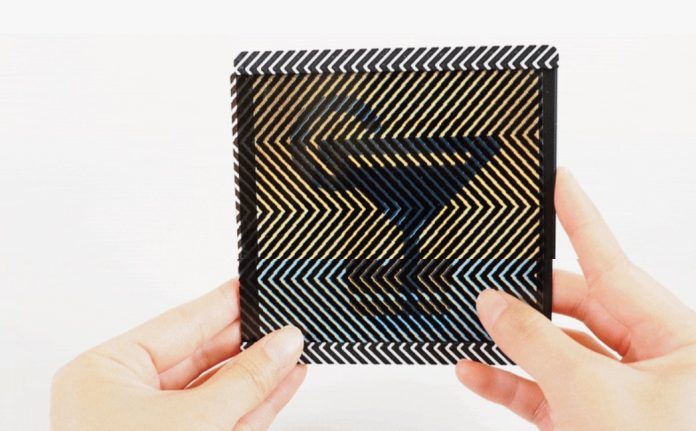
Imagine turning a children’s book into a moving cartoon or making a coaster that changes design as you tilt it—without a single battery or wire.
Thanks to researchers at MIT, this kind of magic is now possible with a new software tool called FabObscura.
The technology is based on something called barrier-grid animations, or “scanimations.”
If you’ve ever seen an image that looks like it’s moving when you slide a striped sheet over it, you’ve already experienced the trick. Traditionally, these animations rely on straight-line patterns to create movement.
But FabObscura expands the possibilities, letting users design overlays in almost any shape—waves, zigzags, spirals, and more—using nothing more than printed materials.
The idea is simple but clever. A special overlay, often looking like a picket fence, moves across an image. The image itself is actually made up of slices of several frames interwoven together. As the overlay shifts, different slices are revealed, creating the illusion of motion.
What MIT’s team discovered is that these patterns don’t have to be straight lines at all. They can be described by mathematical functions.
For example, a sine function can generate smooth, wavy patterns, while radial functions can produce hypnotic spirals. Users can type these functions directly into FabObscura’s interface, instantly generating unique barriers that bring their designs to life.
FabObscura makes it easy for anyone to explore these effects. Users can upload animation frames—say, a horse running—or select from built-in sequences like a blinking eye. With just a home printer, they can create the interlaced image and matching barrier on paper or transparent sheets. When the barrier is slid or rotated across the image, the animation comes alive.
The tool can also combine two animations into one design, something the researchers call “nested animations.” For example, one image might transform from a car to a motorcycle depending on how the barrier is moved. The team even built playful everyday items, like a jar lid with a sunflower that blooms when you twist it open.
This opens up possibilities for artists, advertisers, and designers. A printmaker might create dynamic posters that seem to move, or a product designer could make packaging that shifts between images. Even simple household objects—clocks, toys, or picture frames—can be given a surprising twist.
There are some trade-offs. While nested animations are novel, they tend to look less crisp than single-layer ones. To help users get the best results, the team has written guidelines, recommending fewer frames and high-contrast images to keep the animations sharp.
Looking ahead, the researchers plan to make FabObscura even more powerful. They want to allow users to upload videos directly, with the software automatically selecting the best frames. They’re also exploring how to extend the technique to 3D objects, perhaps with the help of 3D printing.
MIT Ph.D. student Ticha Sethapakdi, who led the project, says the goal is to make animated displays easy for everyone. “Our system can turn a seemingly static, abstract image into an attention-catching animation,” he explains. “The tool lowers the barrier to entry, helping users try designs that would have been very time-consuming by hand.”
With FabObscura, even the most ordinary objects can become extraordinary.



